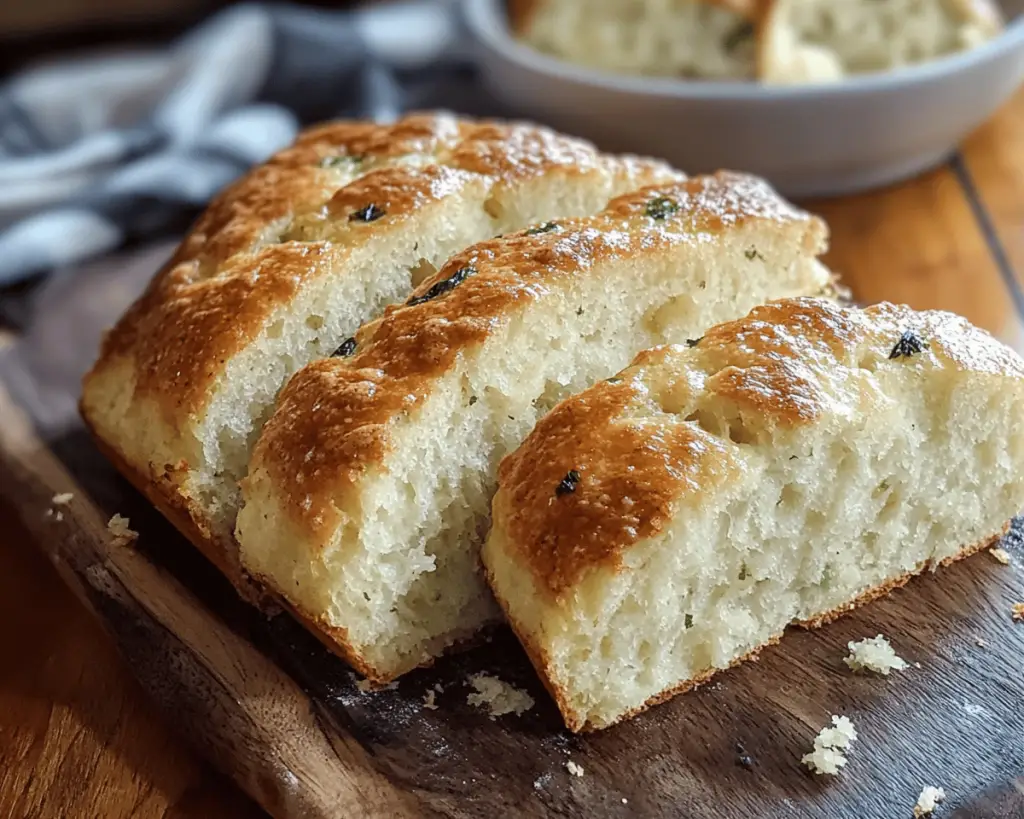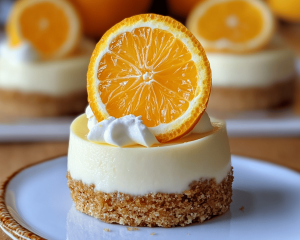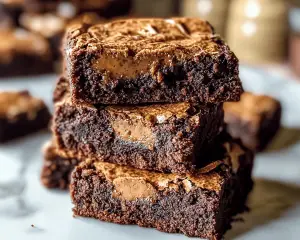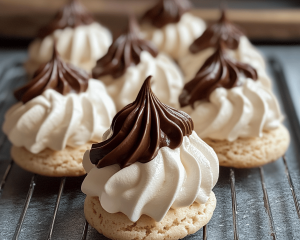There’s something deeply comforting about the ritual of baking, a soothing melody that plays in my mind as the dough comes together in my hands. Often, it’s an invitation to pause and reflect, a chance to escape the chaotic tempo of modern life. Among the many recipes that hold a special place in my heart, Irish Potato Bread is a treasure that calls forth fond memories and the warmth of family gatherings. The simple, hearty goodness of this bread mirrors the spirit of those cherished moments—long conversations around the kitchen table, laughter ringing out over shared meals, the warmth of my grandmother’s kitchen wrapping around me like a well-loved quilt.
I first encountered Irish Potato Bread in my grandmother’s cozy kitchen, its scent weaving its way through a tapestry of memories. She would often pull out her aged wooden board, dust it with flour that looked almost like fairy dust in the dim kitchen light, and then commence the beautiful process of mixing ingredients together. We laughed about the proportions—a pinch of this, a handful of that—always with an air of intuition that brought a smile to her face. The recipe seemed to vary each time, somehow better than the last, yet here I am, years later, attempting to pin down that joyful chaos and transform it into a timeless ritual.
The bread, with its golden crust and soft, pillowy interior, feels like a hug in edible form. With each slice, the flavor sings of simplicity—potatoes, flour, salt, a touch of baking powder. It’s a recipe that connects me to the loveliness of ordinary days and reminds me of a time when life moved with a steadier rhythm. I envision my grandmother’s weathered hands kneading the dough, each fold a whisper of her heritage, of family, and of love that transcends generations. My heart is heavy yet light at the thought of those days—this bread not just sustenance, but a vessel of memory infused with the laughter and love of family.
### Behind Every Ingredient
Potatoes: These humble tubers are the soul of this bread. Growing up, my grandmother would always have a pot of potatoes boiling on the stove, their comforting scent enveloping the house. Potatoes represent warmth and resilience; they remind me of the countless meals that brought us together. I remember how she’d lovingly talk about the potato famine, her voice tinged with somberness, reminding us of their significance in our Irish roots. When mashed and incorporated into the dough, they lend a creamy texture that elevates the bread into something extraordinary.
All-purpose flour: This ingredient, a canvas waiting for flavor, was always stored in a bag that had seen better days. Oh, how I loved to scoop it out, the soft, powdery granules filling the air with a gentle dusty cloud. It’s the foundation that brings together all the elements, representing the homey feeling of baking bread as aroma fills every corner of the house. Watching my grandmother sift the flour always calmed my restless spirit; it was like she was sifting through life’s ups and downs, creating something beautiful with the simple act of combining.
Baking powder: Just a small touch, yet it works like magic, allowing the bread to rise and gives it that lightness that contrasts with the density of the potatoes. Each time I open a canister of baking powder, I think of the moment it filled my grandmother’s handheld sifter, its gentle clink a reassuring sound that promised deliciousness. I once learned from her that baking powder represents new beginnings—like when it bursts forth in the oven, it’s a reminder that there is always room to grow, to rise.
Salt: An often overlooked hero, salt binds everything together and elevates the flavors. I still remember the salt dish my grandmother used, a bit chipped but filled with a coarse white treasure that had its own story. She would pinch it delicately between her fingers, casting it into the dough as if weaving a spell. Salt brings balance, a grounding essence reminding me of the bittersweet moments of life; it’s the contrast that helps me remember that joy and sadness are both part of a beautiful tapestry.
### Comfort Meets Care: Is It Healthy?
In the world of food, particularly in baking, there’s often a delicate dance between indulgence and health. This Irish Potato Bread falls somewhere in the middle; its ingredients speak of both comfort and care. The potatoes, mashed into the dough, offer nourishment and are high in potassium. Traditionally, they also bring a heartiness to the bread that means one slice is usually enough to satisfy.
The all-purpose flour lends structure, but the reality check kicks in as it is refined. It could easily be substituted with whole wheat flour or a gluten-free blend if one desires a healthier angle, yet let’s be honest—there’s an undeniable charm in using the old-fashioned ingredients. The baking powder is a lively element that adds a bit of lightness, making it not just bread, but an experience that grounds me in the moment of baking.
So, while I recognize that this isn’t a “superfood,” what I do cherish is the emotional nourishment it brings. There is a balance to be struck, and sometimes indulging in a rich slice of bread, lightly slathered in butter, is the kind of balance life needs. It’s a reminder that perfection doesn’t exist in food or life; what matters is the joy we create and share.
### Ingredients for Irish Potato Bread
– 2 cups of mashed potatoes (about 2 large potatoes)
– 2 cups of all-purpose flour (plus extra for rolling)
– 1 teaspoon of baking powder
– 1 teaspoon of salt
– ¼ cup of milk (or more, as needed)
– 1 tablespoon of butter, melted (optional, for richness)
### Here’s How I Make It
As I begin, I find that the first step is to create an inviting atmosphere. I’ll light a candle and put on some soft music, allowing myself to settle into this beautiful moment. Cooking always feels like a meditation for me, an opportunity to connect with the self. I turn on the kettle and bring my thoughts back to the dough—the glue that binds so many cherished times together.
1. **Start with the Potatoes**. The potatoes must be peeled, a task often met with gentle nostalgia. I recall the summer afternoons in my grandmother’s garden, the way the dirt clung to my hands as we dug them up. Today, I boil my potatoes, their earthy aroma filling the kitchen. Once soft, I drain them and mash them until they’re creamy, letting them cool just enough so they won’t scald my fingers when I knead the dough.
2. **Mix the Dry Ingredients**. In a large bowl, I start to mix my all-purpose flour with baking powder and salt. The flour is a soft cloud, and I can’t help but to laugh as it lightly coats my hands. When they dance in the bowl, it reminds me of joyous moments at family functions—an echo of laughter that reflects the joy food brings into our lives.
3. **Incorporate the Potatoes**. Once the mashed potatoes have cooled, I fold them gently into the flour mixture, the dough starting to form. I feel the texture transform, like sand molding into a shape after a drop of water. It’s a tactile experience that grounds me. At times I found myself overly focused on recipes, but here, I remember my grandmother’s freedom of spirit—never afraid to add a little extra or take away what she felt wasn’t right.
4. **Knead the Dough**. Once combined, I turn the mixture onto a floured surface—a sacred stage for this beautiful event. I can still hear my grandmother’s gentle chuckle as I knead the dough, pressing it with love and confidence. It’s not an exact science; it’s a feeling. My hands know when the dough is smooth and pliable, silky beneath my fingertips. I sometimes find a bit of joy in the little imperfections, those uneven folds that add character to the bread.
5. **Shape the Bread**. Shaping the dough into rounds is like molding soft clay. Each lump of bread takes on a personality of its own. I lay them onto a baking sheet lined with parchment paper. The anticipation builds in my heart as I snip a small “X” in the top of each loaf—a sheepish nod to tradition, my guide as much as the recipe.
6. **Bake**. Into the oven they go, their surfaces turning golden brown as the heat envelops them. The smell begins to fill the air, a comforting embrace that has me hurriedly checking after only fifteen minutes. As the timer ticks down, I can’t help but fantasize about those gatherings of old—friends and family around a rich table singing songs, reminiscing, and sharing stories of love and laughter.
7. **Rest and Serve**. After they emerge from the oven, steaming with promise, I place them onto a cooling rack. The sight is mesmerizing; reflections of amber light dancing on their surface. But patience is a virtue! They need to cool down a little before slicing—unless you want a perfect burn on your fingertips. It’s worth the wait, I remind myself, even as I can almost taste that first bite.
### My Little Secrets
Ah, the magic of baking doesn’t just lie in the recipe—it’s the small adjustments that whisper tales only the baker knows. Once, during a baking experiment, I found myself short of flour and quickly improvised by adding a ½ cup of oat flour. It almost turned into a culinary accident but blossomed into something beautiful. The slight nuttiness added depth and a wonderful texture to the bread that transported me back to brisk walks through an Irish autumn.
I also love a little hint of herbs—a sprinkle of dried rosemary or thyme in the mix adds a surprise element that surprises everyone. The first time I served it, my uncle paused mid-bite, his eyes sparkling with curiosity and delight.
Furthermore, I’ve learned the importance of serving it warm, accompanied by freshly churned butter—my grandmother’s recipe included a hint of salt in the butter that brings it to life in a way that feels ethereal.
When plating, I love to use my grandmother’s old ceramic bread dishes, the intricate floral designs faded but still charmingly beautiful, as if each dish carries its own story of family dinners and Sunday gatherings.
As I prepare the bread, I often pause to reflect on the importance of the hands that have made this before me, those who cared to infuse love in every fold, that intangible ingredient that makes food not just fuel but comfort—and in many ways, a form of love.
In this kitchen, where each ingredient resonates with stories of the past, I feel a connection—across generations, transcending the ordinary matter of flour and water.
—
There’s something beautifully significant about how food keeps memories alive, how each recipe connects us to our culture, family roots, and even the subtle intricacies of our seasons. Irish Potato Bread, simple in its essence, carries with it the weight of love and laughter.
As I slice through the tender loaf, I see more than just the bread before me; I see laughter intertwining with the steam rising into the air, friends gathering around tables crowned with kindness, and my grandmother, her smile illuminated in the flickering candlelight of a warm evening.
I ponder how each bite serves as a reminder of where we’ve come from—a lifetime of moments gathered in a glorious reminder that the beauty of cooking is not just the food served on the plate, but the way the preparation brings joy and healing to the everyday chaos of life.
With each loaf I bake, I carry forward the stories of my past, the love of my grandmother, and the tradition of togetherness—a cycle of comfort and care that continues through each meal shared with those I hold dear. Irish Potato Bread has become a vessel of memory, ensuring that those moments linger just a little longer, cozy like a deep, warm hug.



